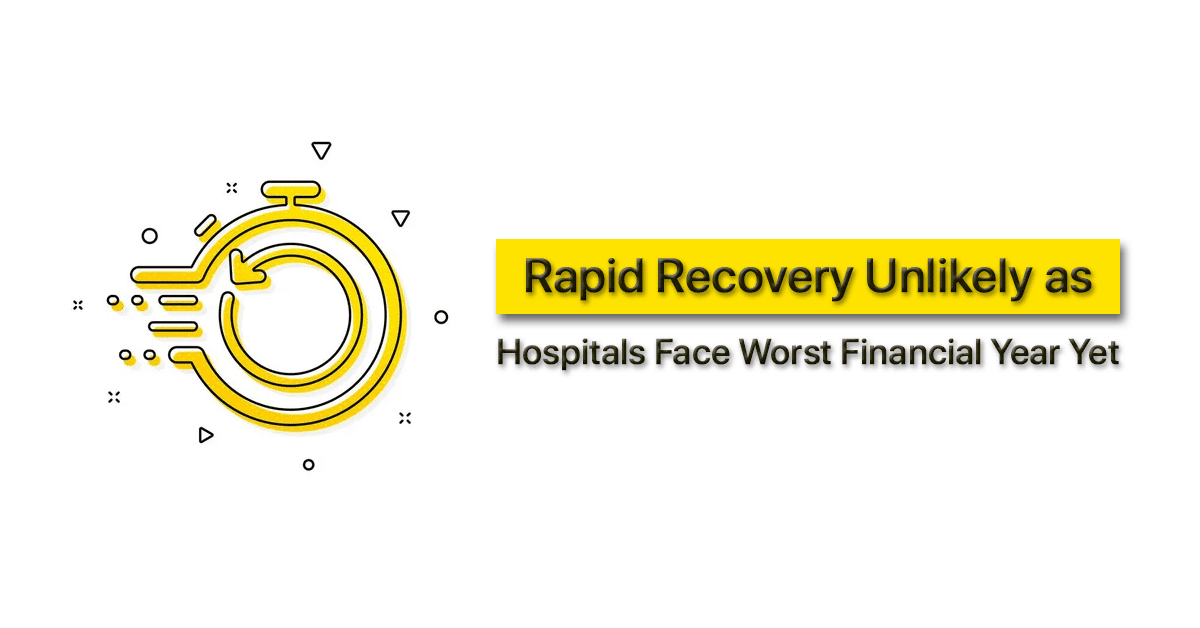Economists say hospitals will have to enact “aggressive cost-cutting measures,” including department or service line closures, to stabilize profit margins.
Hospitals will need to take drastic cost-cutting measures to stabilize balance sheets after one of the worst financial years in decades, according to economists.
Those measures may include department and service line closures or even complete hospital closures, federal health economist write in the Health Affairs Forefront post.
“The financial challenges facing hospitals are substantial and likely to persist in the coming years,” say federal health economists. “The existing challenges and the manner in which hospitals respond will have long-term implications for cost, quality, and access to care, especially within historically underserved communities.”
Median hospital operating margins were negative through the first eight months of 2022, according to hospital financial performance data. Over half of hospitals are slated to finish out the year with negative margins, too.
Two federal health economists attribute poor financial performance to widespread labor shortages, especially on the nursing front, patient volume volatility, and ongoing supply chain disruptions, which have increased expenses for hospitals. Hospitals have not been able to pass rising costs onto payers in the form of higher payment rates either, they explain.
“While it’s tempting to view these challenges as transient shocks, a rapid recovery seems unlikely for a number of reasons,” the post states.
Recovery will be slow because, while hospitals experienced a substantial labor shortage during the COVID-19 pandemic and its aftermath, the healthcare employee supply has been a longstanding issue as demand for care increases. In fact, the industry is facing a shortage of up to 450,000 nurses by 2025, a report says.
Additionally, hospital reimbursement rates will be slow to adjust to rising costs. Medicare rates, for example, are adjusted annually and those rates already pay under the actual costs of treating Medicare beneficiaries. Hospitals also typically negotiate with private payers every three to five years and negotiating higher rates will depend on a hospital’s market share, which could leave smaller hospitals struggling with rates far below their actual care costs for a while.
Finally, healthcare is no longer as “recession-proof” as previously thought because of the rise of high-deductible health plans and patient financial responsibility, the economists state. Many patients are already forgoing care because of costs and an economic downturn could worsen the access challenge.
Cutting costs is a surefire strategy for maintaining profitability and care access, the post indicates.
“Cost-cutting measures will inevitably yield efficiencies in a notoriously inefficient industry. Additionally, not all facility closures negatively impact care. While rural facility closures can have dire consequences in health emergencies, studies have found that outcomes for non-urgent conditions remained similar or actually improved,” federal health economists write.
The current economic climate may also benefit health policy and regulation. Policymakers have been focused on bringing down healthcare costs and the economists say that, for once, hospital incentives are aligned with this broader health policy goal.
Federal health economists point to the establishment of the Rural Emergency Hospital designation, which will provide incentives for critical access and rural hospitals to convert to standalone emergency departments starting in 2023. The designation “supports crucial community and rural services without continuing to fund broader health system inefficiencies,” federal health economists say.
They also state that increasing coverage of digital health and telehealth services would help maintain access to care during difficult financial times.
“By relying on targeted, evidence-based policies, policy makers can mitigate the negative consequences and allow for a more efficient and effective system to emerge,” conclude federal health economists.
For More Information: rapid recovery unlikely as hospitals face worst financial year yet

